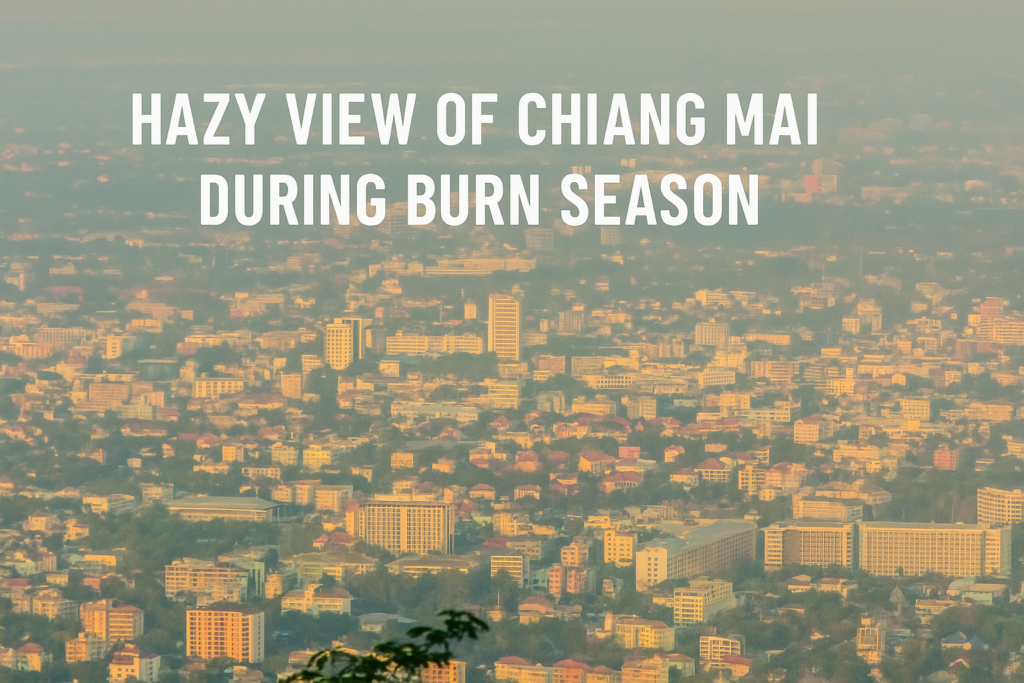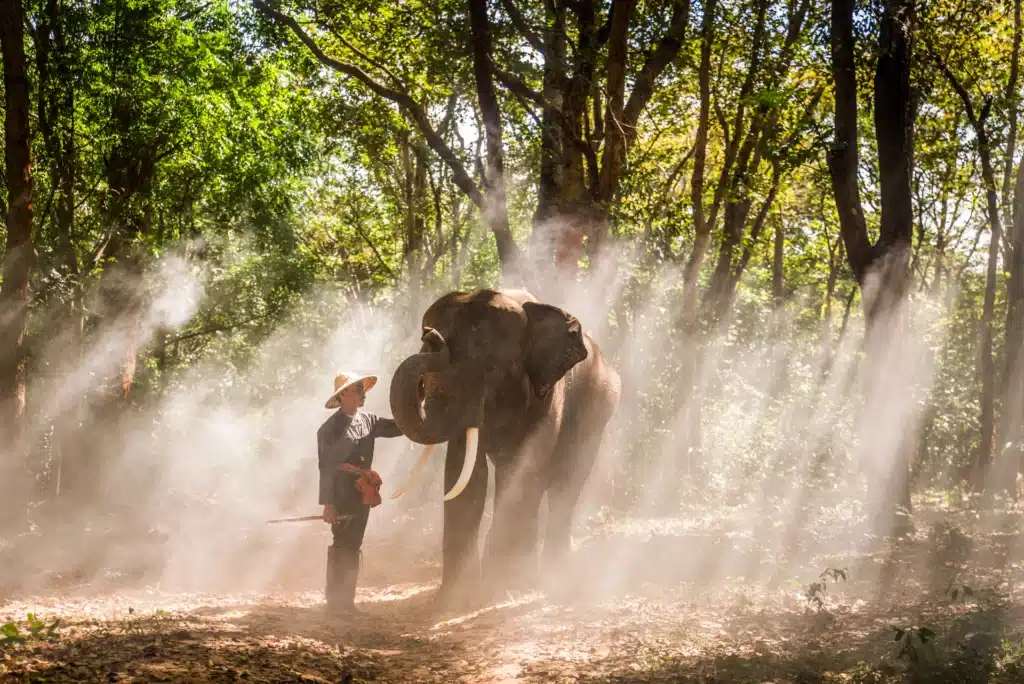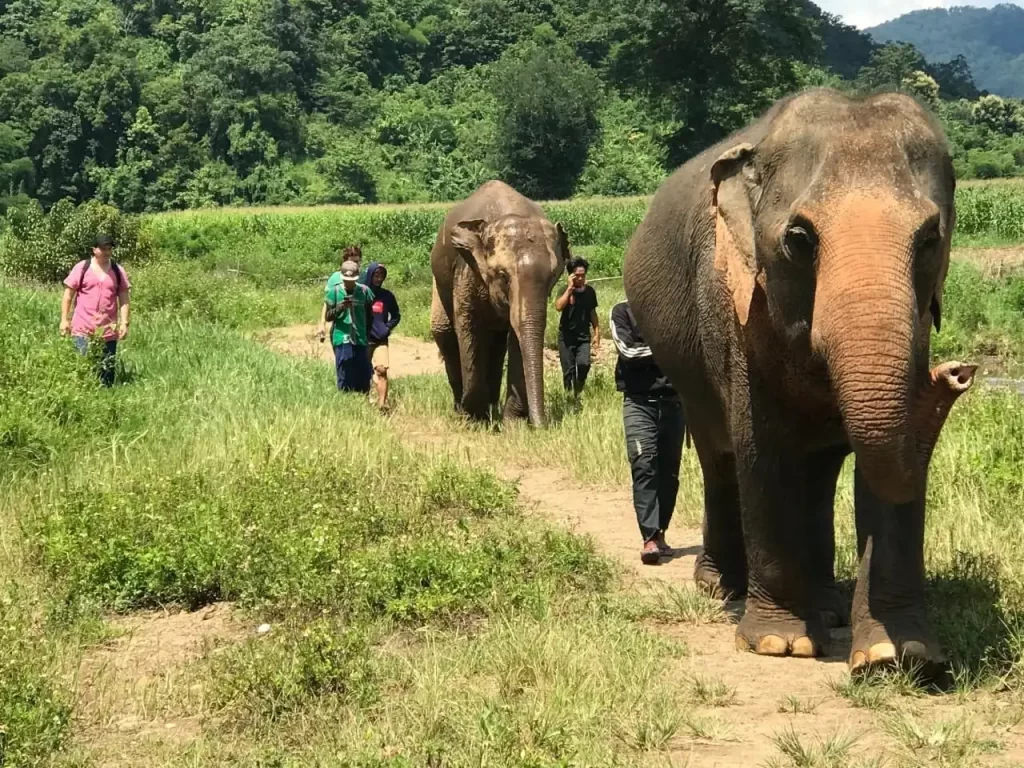
Should I Travel to Thailand During The Chiang Mai Burn Season?
Pros and Cons for Visiting Chiang Mai
Every year, thousands of travelers fall in love with Chiang Mai’s misty mountains, rich culture, and elephant sanctuaries. But if you’re planning a trip between late February and early April, you may come across the term “Burn Season” — and wonder if it’s still worth the visit.
At Elephant Freedom Project, we believe in honest, helpful guidance. So here’s everything you need to know about traveling to Chiang Mai during burn season — including the pros, cons, timing, weather conditions, and tips to make the most of your experience.
🗓️ What Is Burn Season in Chiang Mai?
Burn season typically occurs from mid-February through early April, when farmers across Northern Thailand burn agricultural waste to prepare fields for planting. Combined with regional wildfires and low winds, this causes hazy skies and increased PM2.5 air pollution, especially in Chiang Mai and the surrounding valleys.
The severity varies year to year — some days are perfectly breathable, while others may require precautions.
🌤️ What’s the Weather Like During Burn Season?
Despite the haze, this period marks the tail end of Chiang Mai’s dry season — with sunny skies, warm temperatures, and little to no rain. Expect daytime highs around 30–36°C (86–97°F) and pleasant, breezy evenings.
This is also peak tourist season, especially in February and early March — so while prices may drop a bit closer to April, you’ll still find Chiang Mai lively and vibrant.

✅ Pros of Traveling During Chiang Mai Burn Season
🐘 1. Fewer Tourists = More Intimate Experiences
As many travelers avoid the season, you’ll enjoy a quieter, more relaxed atmosphere at temples, night markets, and sanctuaries like ours.
💸 2. Lower Prices During the Chiang Mai Burn Season
Hotels, flights, and tour operators may offer discounted rates, especially after mid-March.
🧘 3. Great for Wellness Retreats
Burn season is perfect for indoor experiences, like meditation, Thai massage training, or yoga retreats in higher-altitude areas.
🎉 4. Festivals & Culture
If you’re visiting in early April, you’ll witness Songkran, Thailand’s water festival and New Year celebration — one of the most joyful events in Southeast Asia.
📷 5. Beautiful Sunsets and Cooler Evenings
Even with haze, the sunsets can be dramatic and colorful — and evenings are cooler and more comfortable than the hot rainy season.
❌ Cons of Traveling During Burn Season
😷 1. Air Quality Can Vary During The Chiang Mai Burn Season
Some days may see PM2.5 levels rise above recommended limits, particularly in the city center. Those with asthma or respiratory conditions should check air quality daily.
🌫️ 2. Mountain Views May Be Hazy
Popular viewpoints like Doi Suthep and Doi Inthanon may not offer the same sweeping vistas — but higher altitudes often have cleaner air.
🚶 3. Outdoor Activities May Be Limited
Hiking, biking, and sunbathing may be less enjoyable when the haze is heavy.
🧭 Tips for Visiting During The Chiang Mai Burn Season
- ✅ Check Air Quality Daily — Use apps like AirVisual or IQAir to plan your outings.
- ✅ Bring a KN95 Mask — Available locally and recommended on hazy days.
- ✅ Choose High-Altitude Destinations — Locations like Mae Win (where Elephant Freedom Project is based), Chiang Dao, and Pai often have better air than central Chiang Mai.
- ✅ Book Accommodation with Air Purifiers — Many hotels now offer them.
- ✅ Plan Indoor & Hands-Off Activities — During the Chiang Mai Burn Season think about catching some cultural experiences, elephant observation tours, and cooking classes are perfect alternatives.

🌱 What We Offer at Elephant Freedom Project
Our ethical elephant sanctuary in Mae Win (just outside Chiang Mai) is nestled in the mountains, where air is often cleaner than in the city. We follow a no-riding, no-touch policy and offer peaceful observation, mahout-led education, and short hikes — all suitable even during burn season.
Our programs also include:
- Elephant vitamin cooking class
- River and jungle hikes
- Cultural interaction with local tribes
- Vegetarian Thai buffet lunch
- Waterfall visits (depending on the program)
💬 Final Thoughts
So — should you travel to Thailand during burn season? It depends on your priorities.
If you’re sensitive to air quality or want crystal-clear views, you may prefer other months. But if you’re after smaller crowds, lower prices, and meaningful, ethical travel, March and early April can still offer a deeply rewarding experience.
At Elephant Freedom Project, we’re open year-round, and our team is always happy to help you plan a healthy and memorable visit.
🏖️ When Is Peak Season in Chiang Mai — and How Is It Different from Summer?
Peak tourist season in Chiang Mai runs from November to early March, when the weather is cool, dry, and ideal for outdoor activities. During this time, you’ll enjoy:
- Clear skies and mountain views
- Comfortable daytime temperatures (around 25–30°C / 77–86°F)
- Major festivals like Loy Krathong and New Year celebrations
By late February, peak season starts to overlap with the Chiang Mai burn season, which lasts into early April. While the weather remains dry and warm, the air quality can become a concern — especially in the city.
Thailand’s summer, on the other hand, begins in May and brings:
- High humidity and intense heat (up to 40°C / 104°F)
- Frequent afternoon rain showers from June to October
- Fewer tourists, but lush green scenery in the mountains
So while summer means heat and rain, burn season means dry weather but potential haze. Each has pros and cons — but the key is choosing what fits your travel goals.


